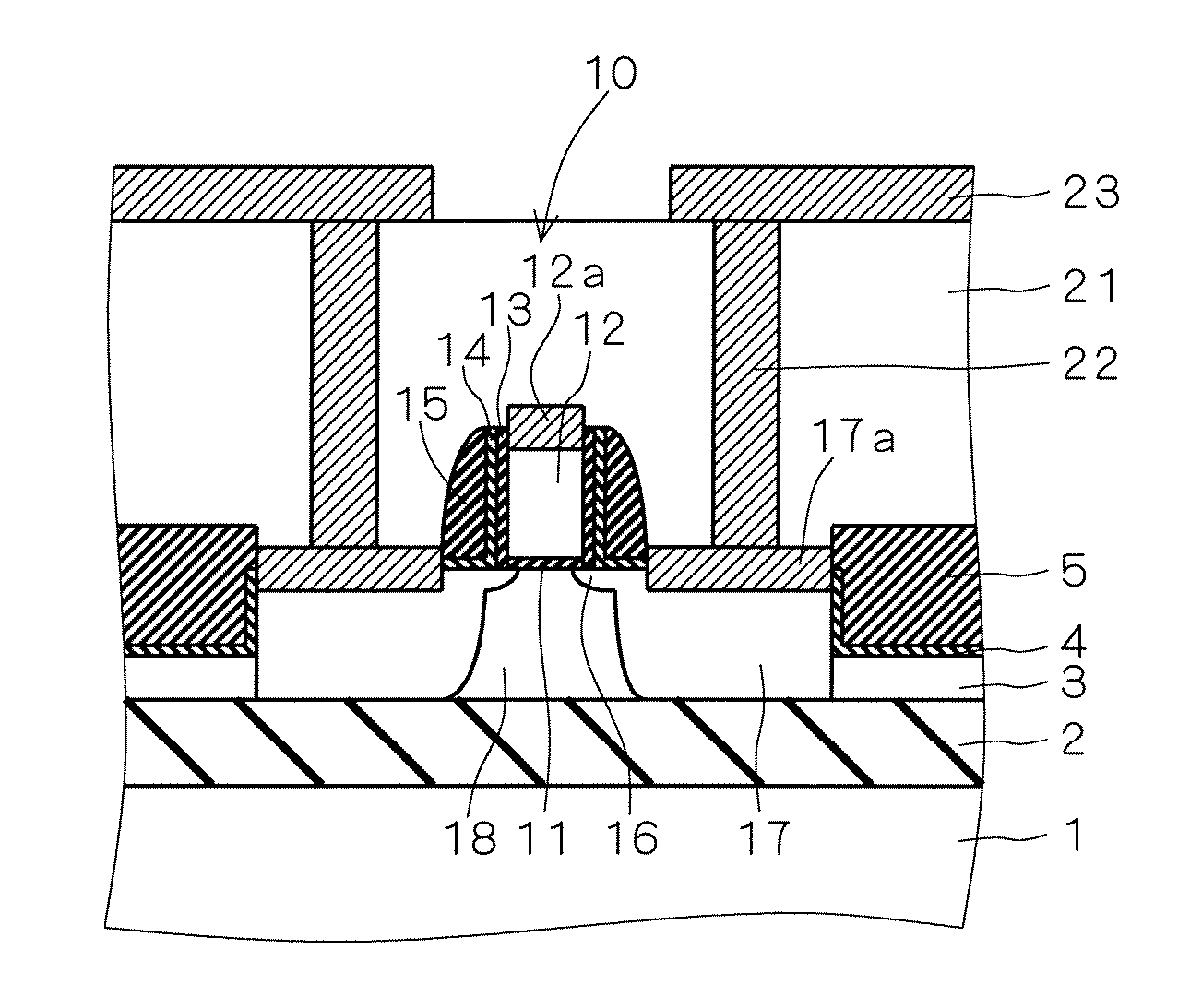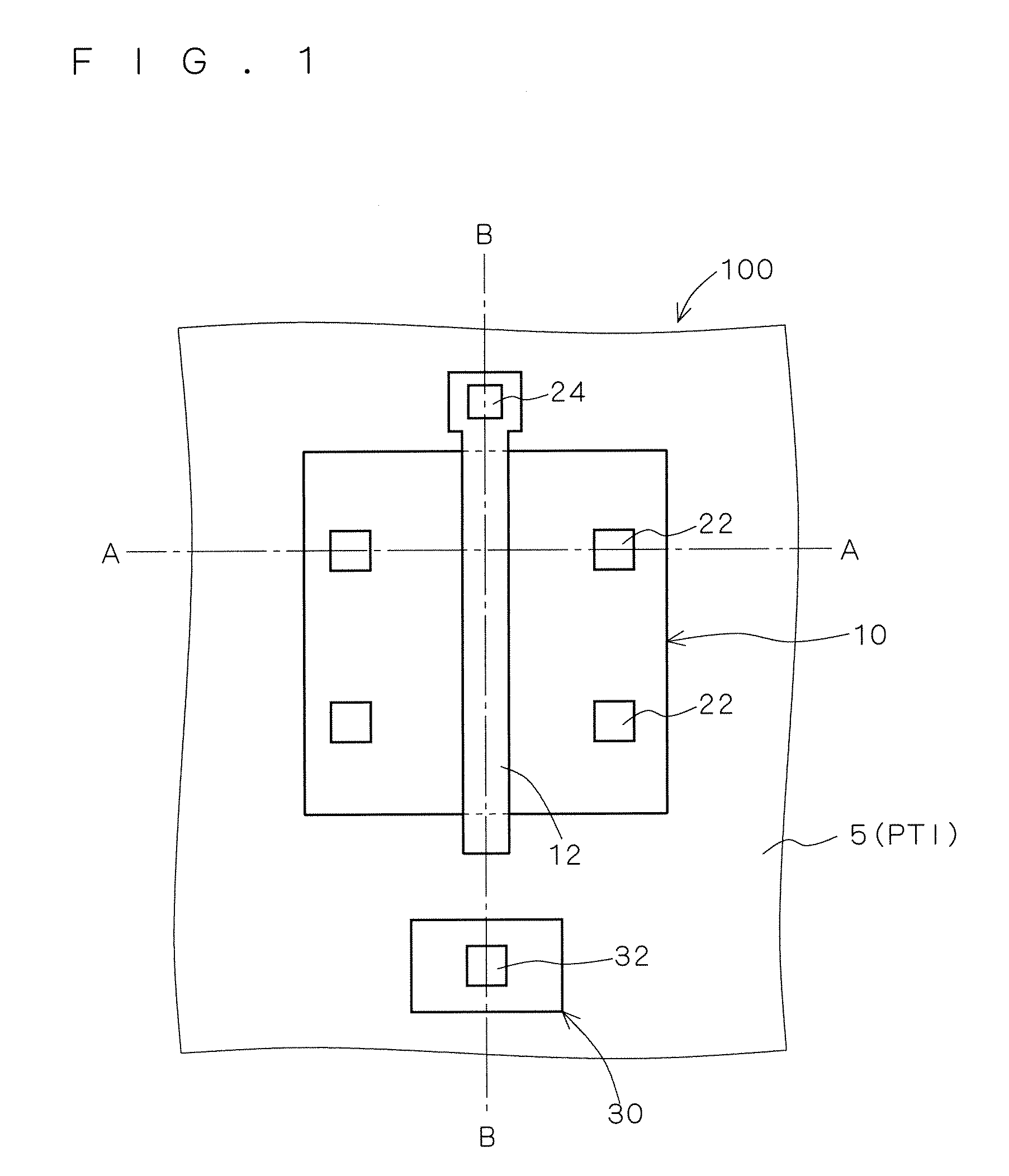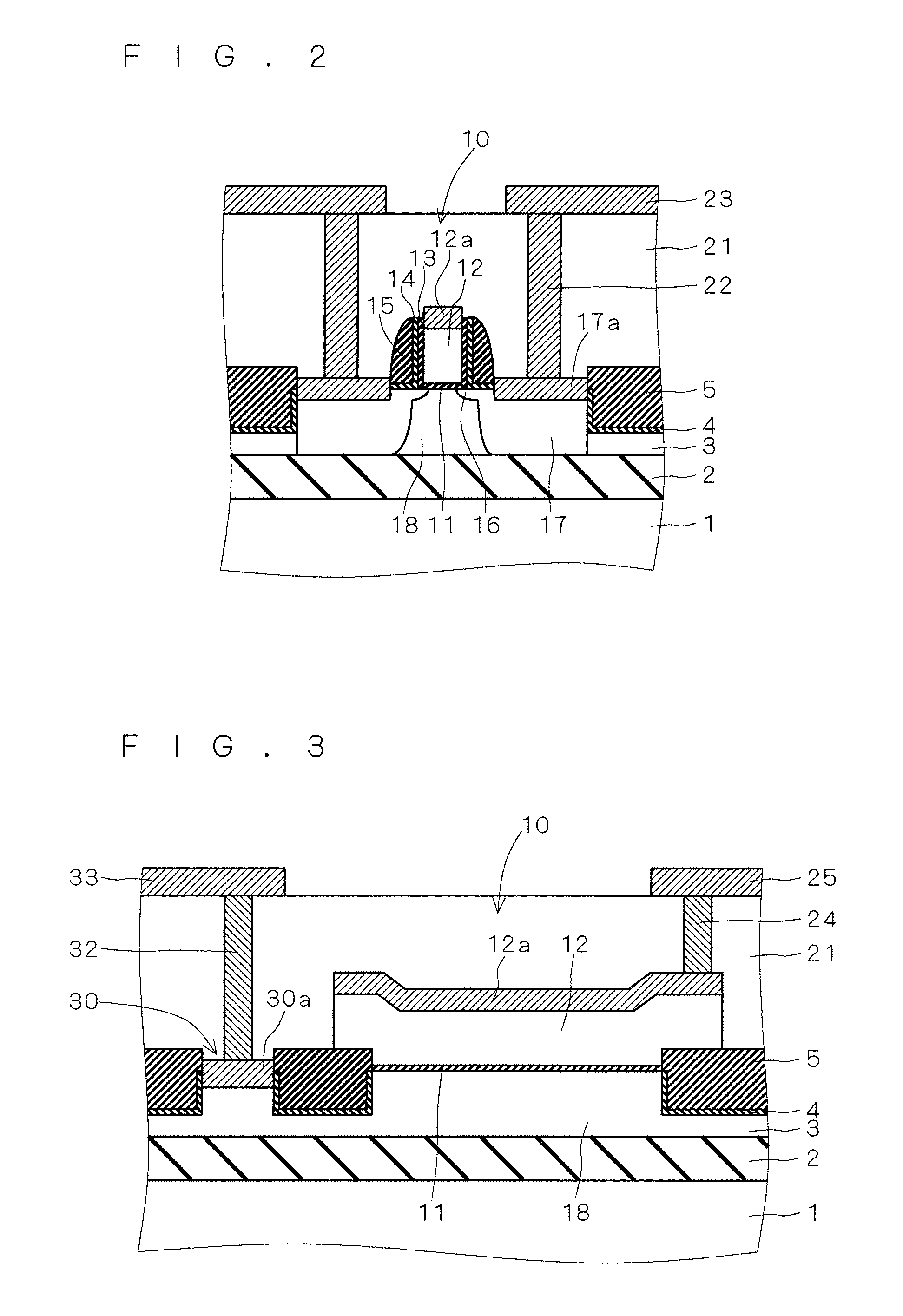Semiconductor device and method of manufacturing the same
a technology of semiconductors and semiconductors, applied in the direction of semiconductor devices, basic electric elements, electrical equipment, etc., can solve the problems of spoiled pti element isolation function, extremely low energy, and become a problem, so as to reduce the leakage current by the junction capacitance of source and drain regions, and reduce the leakage current. the effect of low energy
- Summary
- Abstract
- Description
- Claims
- Application Information
AI Technical Summary
Benefits of technology
Problems solved by technology
Method used
Image
Examples
embodiment 1
[0032]FIG. 1-FIG. 3 are the drawings showing the structure of the semiconductor device concerning Embodiment 1 of the present invention. FIG. 1 is a top view of the MOS transistor with which the semiconductor device concerned is provided, and FIG. 2 and FIG. 3 are the cross-sectional views which are taken along the A-A line and the B-B line of FIG. 1, respectively. Through these drawings, the same reference is given to the same element.
[0033] The semiconductor device concerning this embodiment has MOS transistor 10, and cell 30 for body electric-potential fixation which is a terminal (body terminal) for setting up the body electric potential on SOI substrate 100 like FIG. 1. Here, on the convenience of explanation, the explanation is made, assuming that MOS transistor 10 is an n channel type transistor (nMOS transistor). However, although also mentioning later, the present invention is applicable also to a p channel type transistor (pMOS transistor).
[0034] With reference to FIG. 2...
embodiment 2
[0069] In order to prevent degradation of the isolation characteristics, it is necessary to make the impurity ion implanted in the case of source and drain region 17 formation not penetrate through isolation insulating layer 5, when PTI is adopted as isolation insulating layer 5, as stated previously. In order to suppress this penetration, it is possible to thicken isolation insulating layer 5, but since SOI layer 3 under the isolation insulating layer 5 concerned needs to secure moderate thickness, there is a limitation in forming isolation insulating layer 5 deeply. Then, it is possible to make high the height (height h shown in FIG. 10) of the portion to which isolation insulating layer 5 projects from the substrate. However, since it is necessary to prevent that the residual substance of polysilicon remains in the case of patterning of gate electrode 12 into the level difference portion of SOI layer 3 and isolation insulating layer 5, there is a limitation also in it.
[0070] Thu...
embodiment 3
[0079] In above-mentioned Embodiment 2, substantial thickness of isolation insulating layer 5 in the ion-implantation step for source and drain region 17 formation was thickened by using silicon oxide film 114 used as sidewall oxide film 14.
[0080] In Embodiment 3, spacer oxide film 13 and sidewall oxide film 14 are formed like Embodiment 1. That is, the forming portions of the source and drain regions 17 concerned in SOI layer 3 are exposed in the case of formation of spacer oxide film 13 and sidewall oxide film 14. And after that, silicon oxide film 60 is separately deposited on the whole surface like FIG. 21, and the ion implantation for source and drain region 17 formation is performed through the silicon oxide film 60 concerned. That is, in the case of the ion implantation for source and drain region 17 formation, silicon oxide film 60 is formed on the upper surface of isolation insulating layer 5.
[0081] That is, the thickness of isolation insulating layer 5 in the ion-implant...
PUM
 Login to View More
Login to View More Abstract
Description
Claims
Application Information
 Login to View More
Login to View More - R&D
- Intellectual Property
- Life Sciences
- Materials
- Tech Scout
- Unparalleled Data Quality
- Higher Quality Content
- 60% Fewer Hallucinations
Browse by: Latest US Patents, China's latest patents, Technical Efficacy Thesaurus, Application Domain, Technology Topic, Popular Technical Reports.
© 2025 PatSnap. All rights reserved.Legal|Privacy policy|Modern Slavery Act Transparency Statement|Sitemap|About US| Contact US: help@patsnap.com



